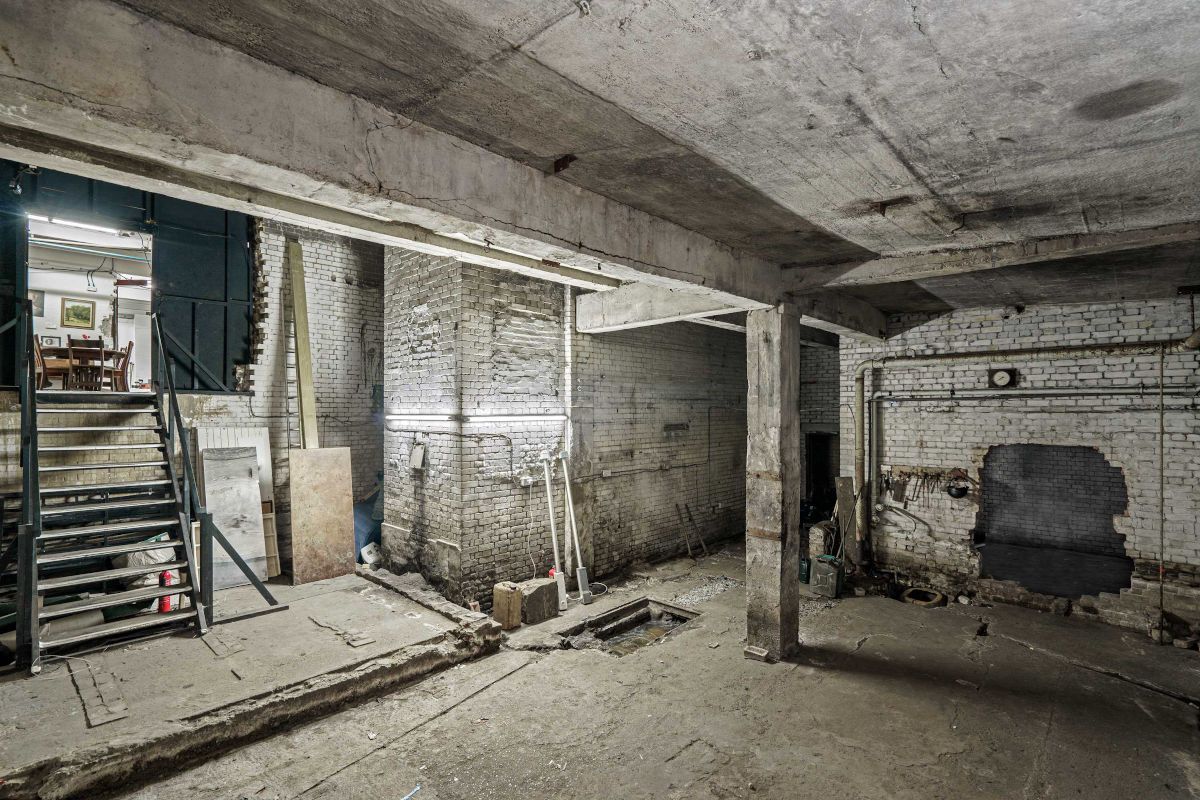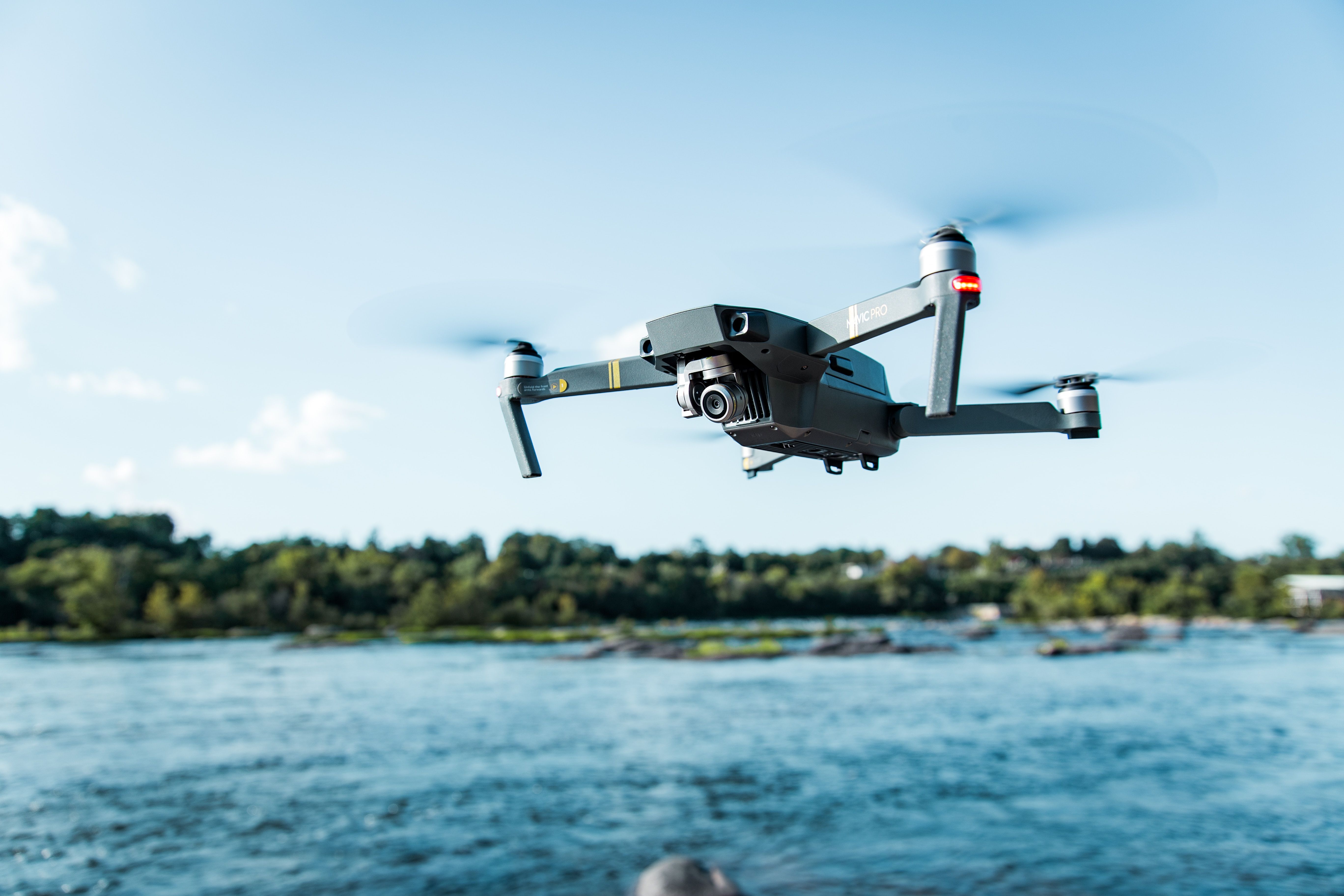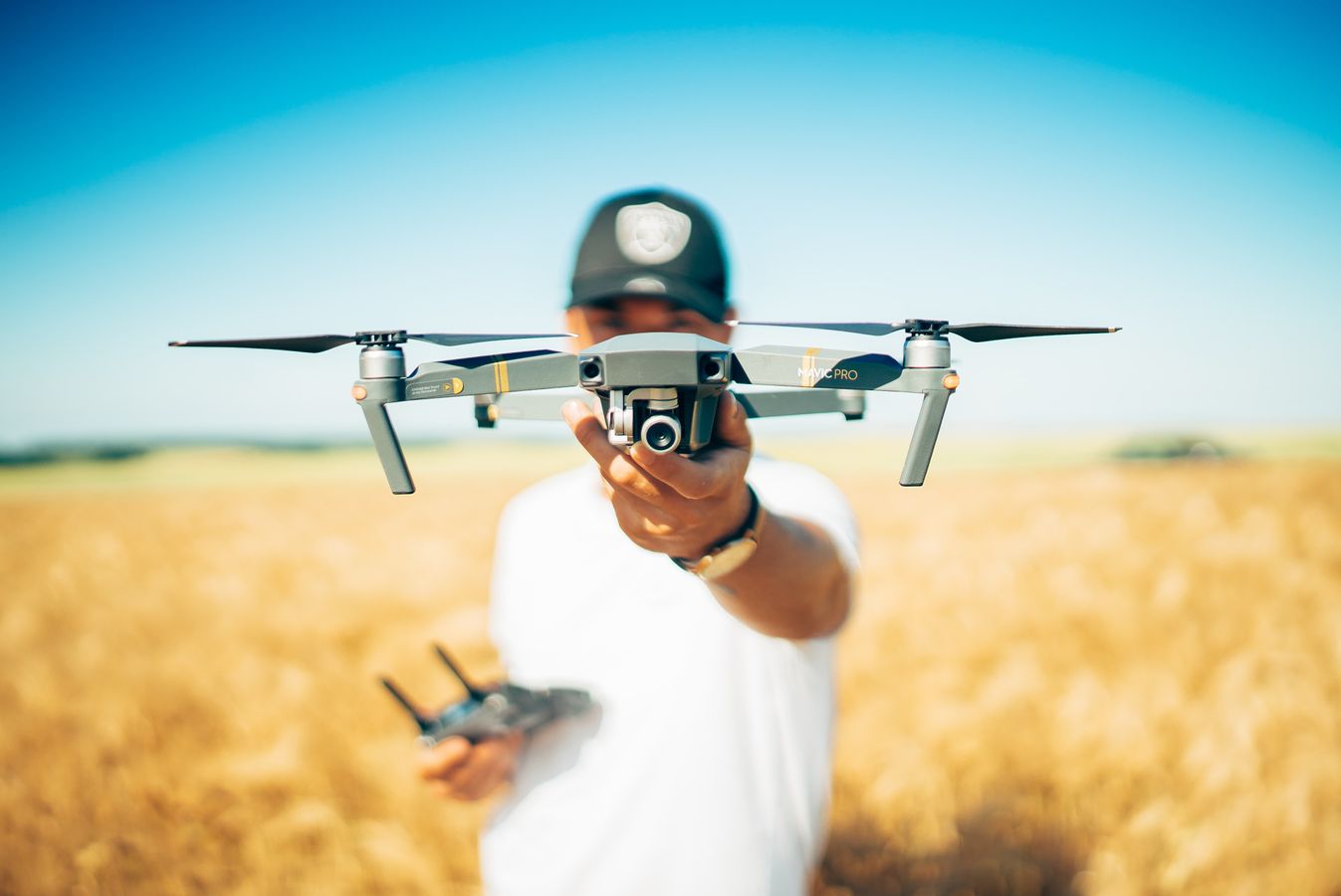In recent years, drone technology has revolutionised the world of filmmaking, enabling filmmakers to capture stunning aerial shots and add new dimensions and perspectives to their visual storytelling. Whether it's for commercial or personal use, drone filming has opened up a whole new world of possibilities. With a drone, you can capture stunning aerial footage that was once only possible with a helicopter or a crane.
However, mastering the art of filming with drones requires a combination of technical skills, creative vision, and adherence to safety guidelines. This essential drone filming guide will provide everything you need to know as a drone filmmaker to capture breathtaking aerial footage safely and effectively.
Contents:
- Choosing the right drone for your needs
- Understanding the features of your drone
- Add-on accessories for your drone
- Drone laws and regulations in the UK
- Strategies for shooting in challenging conditions
- Editing and post-production tips for drone filming
- Wrapping up
Choosing the right drone for your needs
When it comes to finding the right drone, first you should consider your specific needs. Are you looking to capture sweeping landscapes or close-up action shots?
Different drones have different capabilities, so it's important to choose one that suits your specific needs. For example, if you're looking to capture stunning aerial footage of a mountain range, you'll need a drone with a high-quality video camera and a long battery life to ensure you can capture all the footage you need.

Budget
Budget is also an important factor to consider. Drones come in a range of prices, from budget-friendly options to high-end models. It's important to determine how much you're willing to spend and what features are essential for your filming needs. For example, if you're a professional filmmaker, you may require a drone with advanced features such as obstacle avoidance and GPS tracking, which will increase the cost. This doesn't mean that there aren't ways to capture great footage as a low-budget filmmaker, however.
Camera specifications
If you're a filmmaker using drones to capture video footage, then the camera is likely the most important component. Drones come with different types of cameras, ranging from basic models to high-end cameras that can capture 4K video. When choosing a drone, it's important to consider the camera specifications, such as the resolution, frame rate, and lens type.
Look for a drone with a camera that has the right resolution and image stabilisation for your needs. Some drones also have the ability to shoot in RAW format, which allows for greater flexibility in post-production.

Flight time
Flight time is also an important consideration when filming with drones. How long the drone can fly on a single battery charge will determine how much footage you can capture in one session. Look for a drone with a long flight time and consider purchasing additional batteries for extended filming sessions if this is important to you.
Quadcopters vs hexacopters
Quadcopters, as the name suggests, feature four rotors. They excel in quick maneuvers, tight turns, and capturing dynamic shots. The symmetrical design of four rotors provides a balance of thrust and control. This maneuverability is advantageous when executing complex flight patterns or capturing action-packed scenes.
Hexacopters, with their additional rotors, tend to have slightly slower maneuverability. The six-rotor configuration offers stability and smoother flights but sacrifices some of the nimbleness found in quadcopters. However, this doesn't mean that hexacopters are incapable of capturing dynamic shots. Skilled pilots can still achieve impressive results with a hexacopter by utilizing their stability and payload capacity.

Hexacopters offer an advantage in terms of redundancy. With six rotors, even if one motor fails during flight, the remaining five can maintain stability and allow the drone to land safely. This redundancy feature provides an extra layer of safety and mitigates the risk of a complete loss of control.
Quadcopters, in comparison, have fewer rotors, meaning that the failure of a single motor can potentially result in a loss of control or an uncontrolled descent.
In summary, choosing the right drone for your filming needs requires careful consideration of your needs, budget, camera specifications, and flight time. By taking the time to research and compare different models, you'll be able to find the perfect drone to capture stunning footage that will leave your audience in awe.
Find film and video studios with Tutti
Choose from 1000+ spaces and locations on Tutti and deal directly with space hosts for a quick, hassle-free booking process.

Understanding the features of your drone
Each drone has different features, and it's essential to understand your drone's features and controls for successful filming.
When it comes to drones, it's not just about the design or the size of the drone, but also about the features that make it stand out from the rest.
Understanding your drone's camera settings is crucial to capturing professional-grade footage. Familiarise yourself with settings such as resolution, frame rate, and white balance to achieve the desired visual effect. Additionally, consider using accessories like neutral density (ND) filters to control exposure and create smooth cinematic motion blur. Experiment with different camera movements and settings to add variety to your footage.
GPS stabilisation
GPS stabilisation is an essential feature that helps keep the drone stable during flights. This feature is especially useful when you're flying the drone in windy conditions or when you're trying to capture footage of a moving object. With GPS stabilisation, you can be sure that your footage will be smooth and stable, even if the drone is moving around a lot.
Obstacle avoidance
Obstacle avoidance is another feature that is becoming increasingly popular in drones. This feature uses sensors to detect any obstacles in the drone's path and helps the drone avoid collisions while flying. This is particularly useful when you're flying the drone in a crowded area or when you're trying to capture footage of a fast-moving object.

Auto-takeoff and auto-land
Auto-takeoff and Auto-land are features that aid in perfecting flying and landing. These features allow the drone to take off and land automatically, which is especially useful if you're new to flying drones. With these features, you can be sure that your drone will take off and land smoothly, without any mishaps or crashes.
Return to Home
The Return to Home feature is another useful feature that allows the drone to return to the exact spot where it took off. This is particularly useful if you're flying the drone in an area where you're not familiar with the surroundings, or if you're flying the drone at a high altitude. With this feature, you can be sure that your drone will return to you safely, even if you lose sight of it.
To summarise, drone filming is an exciting and innovative way to capture stunning aerial footage. By understanding the basics of drone controls, cameras, and camera movements, you can create engaging footage that captures the essence of your subject.
Understanding these features and incorporating them into your filming can help you capture stable and high-quality visuals. Whether you're filming for fun or for professional purposes, having a drone with these features can make a big difference in the quality of your footage. So, take the time to understand your drone's features and controls, and you'll be sure to capture amazing footage every time you fly.

Add-on accessories for your drone
As drone technology advances, so do the accessories and add-ons that can help improve and enhance your drone footage.
Batteries
One of the most important things to consider when purchasing a drone is battery life. Flying a drone consumes a lot of battery power, so it's essential to carry extra batteries to keep the drone flying. This is especially important if you plan on taking your drone on a long trip or filming a lengthy event.
Most drones have a flight time of around 20-30 minutes, so it's important to plan your flights accordingly. Make sure you have spare batteries on hand to avoid crashes due to low battery.
ND filters
Another accessory that can improve your footage is ND filters. These help regulate exposure, shutter speed and highlights, which is especially important when filming in bright sunlight. ND filters come in different strengths, so it's important to choose the right one for your specific needs.
Aerial gimbals
If you want to take your drone footage to the next level, consider investing in an aerial gimbal. A gimbal is a piece of filming equipment that helps stabilise the camera when filming and provides a smooth shot, even in windy conditions.

But it's not just about the accessories - it's also about how you use them. Experiment with different camera settings and accessories to find the perfect combination for your footage. And don't forget to have fun - drones are a fantastic tool for capturing breathtaking visuals and exploring the world from a new perspective.
Propeller guards
Propeller guards, also known as prop guards or propeller protectors, are accessories designed to enclose and protect the propellers of a drone. They create a physical barrier around the propellers, reducing the risk of damage to the drone and potential harm to people or objects in the vicinity.
Propellor guards are particularly useful for beginners or in environments with many obstacles, such as indoor spaces or close-quarters filming.
Drone laws and regulations in the UK
Safety is paramount when filming with drones. Laws and regulations regarding the use of drones vary by country and even within different regions. So it's crucial to understand and comply with the specific regulations of the jurisdiction where you plan to fly your drone for filming purposes. In the UK, you can refer to the government website or the Civil Aviation Authority for official guidance, but we've provided a brief overview here:
Registration and licensing
In the UK, all drones weighing 250 grams or more must be registered with the Civil Aviation Authority (CAA) before they can be flown. If your drone exceeds this weight, you'll need to complete an online registration process and receive an Operator and Flyer ID, and you must display both of these on the aircraft, either directly on the drone or accessible without using tools.
You don't need to register if your drone is considered a toy, which generally means that it weighs below 250g and doesn't have a camera. Of course, if you're using drones for filming, then this won't apply and you'll need to go through the proper channels. It's always best to err on the side of caution, so it's important that you register with the Civil Aviation Authority.

To obtain a Flyer ID, drone operators must demonstrate their competency by passing an online theory test, which is free to take. To obtain an Operator ID, your drone will need to pass a separate practical flight assessment, which will cost £10 for the year that it lasts.
If you are under 18 years old, you can only register as an operator or flyer with the supervision and consent of a responsible adult.
Flight restrictions
The UK has established specific No-Fly Zones and Restriction Zones to ensure the safety of airspace, meaning that drone operators are prohibited from flying in these restricted areas unless they have obtained appropriate permission from the relevant authority.
As a result, it's important that you consider location scouting before you go out and film with drones. Certain areas, such as airports, aerodromes, and military bases, have specific flight restrictions, and drones should not be flown near these locations without proper authorisation.
Special consideration should be given to privacy and data protection laws when capturing images or videos using drones. Drones should not be flown higher than 400 feet (120 meters) and must be kept at least 150 meters away from congested areas or gatherings of people.

It's important to familiarise yourself with your country's regulations and obtain any necessary permits or licenses, as failure to comply with the drone regulations can result in fines, criminal charges, or other legal consequences. Fly in designated areas whenever possible, and be mindful of privacy concerns.
Strategies for shooting in challenging conditions
Shooting footage with a drone can be an exhilarating experience, but it can also be challenging, especially if you're faced with difficult weather conditions. Before heading out to film, it's essential to check the weather forecast to ensure that conditions are favourable for flying your drone.
High wind
If you're planning to shoot in high wind conditions, it's best to avoid flying into the wind as it can cause your drone to lose stability. Instead, hover at the same height at all times, and if possible, use a drone with a stabilisation feature. This feature can help keep your shots steady and prevent them from looking shaky.
High altitude
When filming with drones at high altitudes, it's crucial to adjust your drone's exposure to avoid over or underexposure. You should also ensure that your drone has a clear line of sight during the flight. This will help you to avoid obstacles and capture stunning aerial shots.

Extreme weather
Unfavourable weather conditions such as sunny, overcast, and windy days present different challenges when filming with a drone. On sunny days, the bright light can cause harsh shadows and overexposure. On overcast days, the lack of light can cause underexposure. On windy days, your drone may struggle to maintain stability, and the footage may look shaky.
When faced with these challenges, it's essential to adjust your camera settings accordingly. For example, on sunny days, you can use a polarising filter to reduce glare and enhance colours. On overcast days, you can increase your ISO or use a slower shutter speed to let in more light. On windy days, you can use a drone with a stabilisation feature or fly at a lower altitude.
Editing and post-production tips for drone filming
Your film is just the start; post-production will help enhance your footage and provide a clean and touching experience.
The magic of aerial cinematography often comes to life during the post-production stage. Transfer your footage to your video editing software and organise your clips. Trim and arrange them to tell a cohesive story, paying attention to pacing and transitions. Utilise colour grading to enhance the visual aesthetics, and add music or sound effects to amplify the impact. Experiment with different effects and techniques to create a unique visual experience.
Colour correction and grading
Correct any colour imperfections and adjust the colours to create a visual mood. This is especially important for drone footage, as the colours can often appear washed out or overly saturated. By adjusting the colours, you can create a more cinematic look and feel.

Video stabilisation
Fix shaky shots, or add smooth and stable camera shots. This is crucial for creating a professional-looking video. No one wants to watch shaky, unstable footage. By stabilising your shots, you can create a more polished and cinematic look.
Sound editing
Remember to synchronise the footage with relevant sounds and music, get them in the right mood. Sound is just as important as the visuals when it comes to creating an emotional experience for your audience. Make sure to choose the right music and sound effects to enhance the mood of your video.
Wrapping up
In conclusion, mastering drone filming takes time and practice, understanding and utilising the features your drone has, including add-ons and accessories, and mastering post-production techniques. But with the right skills and tools, you can create breathtaking aerial footage that will leave your audience in awe.

Remember, when it comes to filming with drones, safety should always be your top priority. Before you start flying your drone, make sure you have read and understood the rules and regulations in your area. It's important to fly your drone in an open space away from people, buildings, and other obstacles.
So, go find your perfect drone and start taking breathtaking aerial footage today!
Find film and video studios with Tutti
Choose from 1000+ spaces and locations on Tutti and deal directly with space hosts for a quick, hassle-free booking process.













